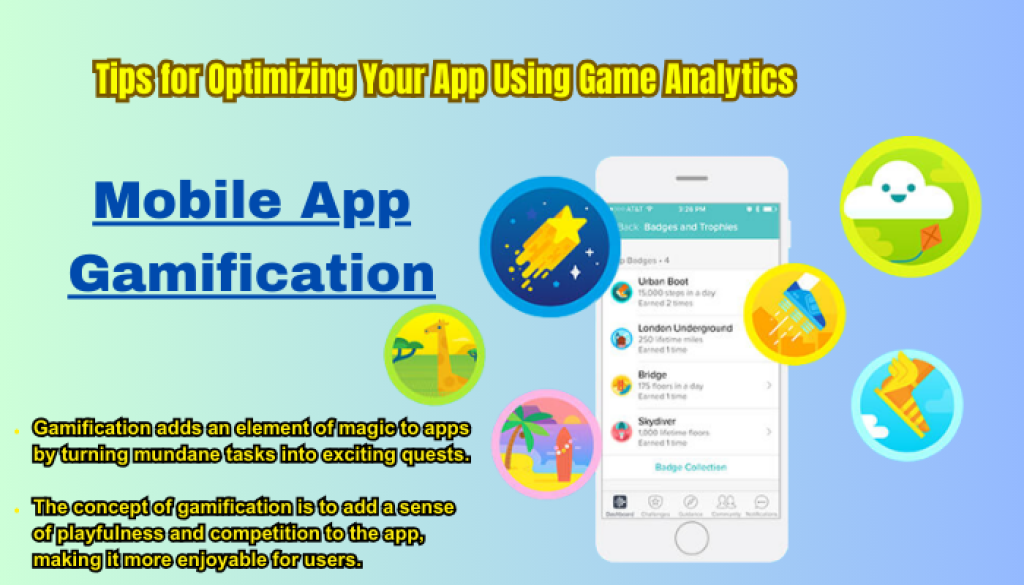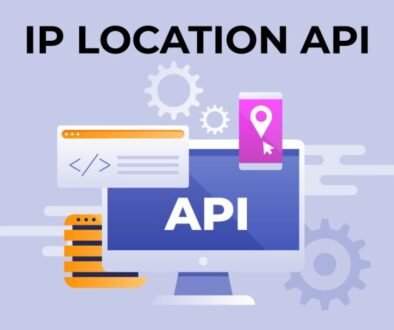How to Use Game Analytics to Optimize Your Mobile App Gamification
Do you remember the joy of playing your favorite game as a kid? Those thrilling moments, challenging quests, and the sweet taste of victory? Well, many businesses are tapping into this joy by introducing game elements into their apps. This technique is known as “gamification.
In this blog post, we’ll delve into how game analytics can be a powerful tool for optimizing your mobile app gamification. So, if you’re a curious soul or part of a app development, stick around!
What is Gamification and Why is it Important?
Gamification is like sprinkling magic dust on apps, transforming routine tasks into thrilling quests. It’s about integrating elements like challenges, rewards, and points to make the app experience more engaging.
- Engagement: A dull app is like an unplayed toy. Adding game elements can awaken user interest, encouraging them to spend more time on your app. Think about a quiz app that lets users earn stars for correct answers. The possibility of earning more stars can make users return repeatedly.
- Motivation: The human brain loves rewards. By introducing badges or points, you can inspire users to complete specific tasks, like posting reviews or inviting friends. A shopping app might offer points for each review, which can later be redeemed for discounts.
- Loyalty: Everyone likes feeling accomplished. When users achieve rewards or climb up the leaderboard, they associate those positive feelings with your app. They’re then more inclined to stick around and even become promoters.
What is Game Analytics?
Game analytics is like a magnifying glass for understanding how users interact with your app. It gathers data on user behaviors, levels completed, points earned, and so much more.
Here’s a simple way to understand it: Imagine you’re playing a game of hide and seek. Game analytics is like the friend who whispers where everyone is hiding. It gives you insights so you can make smarter choices.
How to Use Game Analytics to Boost Your Mobile App Gamification
Track User Behavior
It’s vital to grasp user patterns. Are they skipping certain challenges? Are they sharing their achievements? By analyzing these patterns, you can refine game elements. For instance, if a puzzle is often skipped, maybe it’s too hard or not fun enough.
- Patterns of Play: Observe how frequently users engage with specific game elements. If a certain challenge is frequently skipped, delve into the reasons. Is it too hard, or perhaps not engaging enough?
- Sharing and Social Interactions: If users are proud of their achievements, they’re likely to share them. Monitoring such shares can give insights into the most valued features of your app.
- Customization Preferences: If your app allows customization, such as avatars or themes, which options do users lean towards? Such preferences can guide future design choices.
Monitor Progression
Progression is the heart of any game. If users zoom through, they may get bored. If they’re constantly stuck, they may leave in frustration. Game analytics lets you spot these hitches. With this info, you can adjust difficulty levels or introduce helper tools.
- Level Completion Rates: By analyzing how quickly users move from one level or challenge to the next, you can gauge if they’re finding it too easy or too difficult.
- Helper Tool Usage: If your app offers tools or hints and users rely on them too much, it could be a sign that a particular segment is too challenging.
- Repeat Attempts: If a user repeats a challenge multiple times without success, they might get disheartened. Offering an optional easier route or additional hints can keep them engaged.
Check the Drop-Off Points
Imagine a runner suddenly stopping in a race. Something must’ve gone wrong, right? Similarly, if users abruptly exit your app, there’s a reason. Analytics can spotlight these drop-off points. Maybe a tutorial is too lengthy, or a challenge feels out of place.
- Session Duration: A shorter-than-average session could indicate a problem. Perhaps a game level is too hard, or a tutorial doesn’t explain things clearly.
- Feedback Collection: When a user exits, prompt them for feedback. This direct communication can offer invaluable insights into what went wrong.
- User Journey Mapping: Chart out the common paths users take in your app. Identifying where these paths most frequently end can spotlight problematic areas.
Evaluate Rewards
Rewards should feel, well, rewarding! If users aren’t excited about earning a badge, you might want to rethink it. Maybe they’d prefer discount codes, early access to features, or even physical goodies.
- Tangible vs. Intangible Rewards: While badges, points, and leaderboards are great, sometimes users crave more tangible rewards. Depending on your app’s nature, consider offering physical merchandise, gift cards, or exclusive real-world benefits.
- Personalization: Everyone has different tastes. Using analytics, you can understand the type of rewards preferred by different user segments. Some might love social recognition through leaderboards, while others might prefer unlocking hidden features or content. Tailoring rewards based on user preferences can significantly enhance engagement.
Community Engagement
Games and apps are more enjoyable when there’s a sense of community. Analyzing user interaction can offer insights into building and nurturing an active user community.
- Social Shares and Invites: Track how often users share their achievements or invite friends to join. This data can provide a perspective on the app’s virality and the features that users love to showcase.
- Collaborative Challenges: If analytics show that users enjoy multiplayer modes or collaborative tasks, consider adding more such features. For instance, if a team challenge gets completed more frequently than solo tasks, it might be worth exploring more team-based challenges.
Tips for Optimizing Your App Using Game Analytics:
User Feedback is Gold
Numbers tell one story, but direct user comments complete the picture. If users suggest a new feature or point out a bug, take that feedback seriously. It’s firsthand information that can complement your analytics.
Experiment and Iterate
The app world is dynamic. What works today might not tomorrow. So, be flexible. Change game features, gauge user reactions, and tweak again. It’s an ongoing dance of observing and refining.
Keep an Eye on Trends
New gaming ideas emerge frequently. Augmented reality, for instance, was once new but is now a favorite in many apps. Staying updated can provide inspiration for your gamification mobile app features.
Collaborate with Experts
Game designers understand the pulse of gaming. If you’re unsure about introducing a particular game element, don’t hesitate to consult experts. Their insights can add depth to your mobile app gamification strategies.
Common Mistakes to Avoid
Over-complicating Things
The beauty of games lies in their ability to captivate and immerse players effortlessly. However, when integrating mobile app gamification into an app, there’s a fine line between intriguing users and overwhelming them. The key is to enhance, not confuse. Consider the controls of classic video games; they often had just a few buttons, yet provided hours of entertainment.
Forcing Gamification
Gamification, without a doubt, has proved its worth in boosting engagement and retention in many apps. But, like a spice, just because it adds flavor to one dish doesn’t mean it should be sprinkled on everything. The relevance of gamification varies depending on the nature and purpose of the app.
Ignoring Data
The digital age has blessed us with the ability to collect, analyze, and interpret vast amounts of data. When it comes to optimizing the mobile app gamification aspects of your app, this data is nothing short of a compass, guiding you toward improved user satisfaction.
Nutshell
Mastering game analytics is akin to having a superpower in the world of mobile app development. It empowers you to understand your users at a profound level, enabling the creation of gamification strategies that captivate and retain audiences. As you embark on this journey, remember that a reliable mobile app development company can be your ally, seamlessly integrating analytics-driven insights into your app’s DNA.
In the quest for an engaging gamified experience, let game analytics be your guiding light. With a keen understanding of user behavior, preferences, and the impact of your gamification elements, your mobile app can not only attract but also retain a dedicated user base, ensuring sustained success in the competitive app landscape. Choose a mobile application development company in USA that values the science of gamification and the art of understanding your users.



